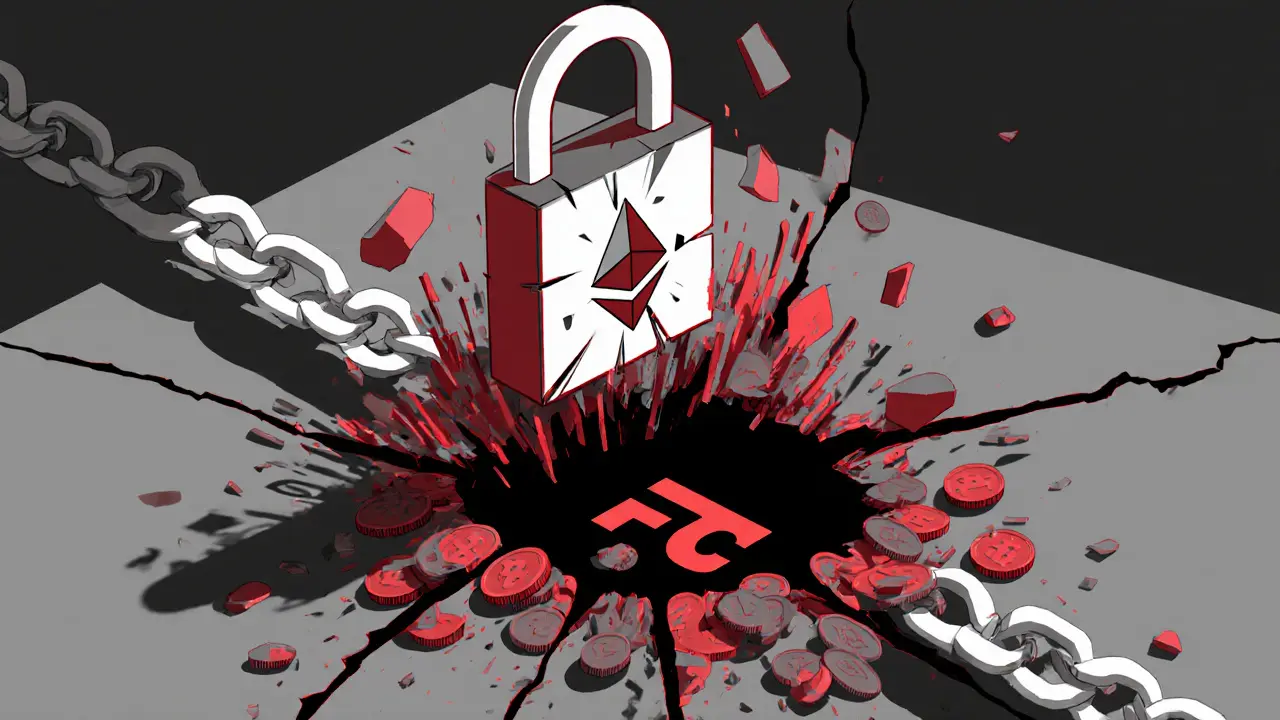There’s no HAI token airdrop. Not now, not ever - at least not from Hacken. If you’ve seen posts online claiming you can claim free HAI tokens, you’re being targeted by scammers. The real story behind HAI isn’t about free crypto. It’s about one of the worst security failures in Web3 history - and how it wiped out nearly all value from a token built by a company that sells cybersecurity services.
What Is HAI Token?
HAI is the native token of Hacken, a Web3 cybersecurity firm that audits smart contracts and monitors blockchain activity for vulnerabilities. Think of it like a digital security guard for crypto projects. HAI was designed to power its ecosystem: you could stake it to earn rewards, use it to vote in governance via hDAO, or unlock exclusive security tools and reports. It ran on both Ethereum and Binance Smart Chain (BSC), with a cross-chain bridge connecting them. That bridge was supposed to make things easier - letting users move HAI between networks without using centralized exchanges. But that bridge became the weakest link.The Hack That Killed HAI
In June 2025, Hacken started upgrading its bridge infrastructure. They were trying to fix old code, improve security, and make the system more reliable. Irony alert: they were building better defenses while accidentally leaving the front door wide open. A private key - the digital password that controls the token contract - was leaked. This wasn’t a hack through a website or an app. This was a breach inside the token’s own code. The attacker gained access to an account with minting privileges. That means they could create new HAI tokens out of thin air. They minted 900 million new HAI tokens - nearly half the total supply. Then they dumped them on the market through decentralized exchanges on BSC. Within hours, the price of HAI crashed from $0.015 to $0.000056. That’s a 99% drop. At its lowest, one HAI token was worth less than a penny’s fraction. Even though the attacker swapped around $253,000 worth of HAI before being stopped, the damage was already done. The market lost confidence. The token never recovered. As of November 2025, HAI trades at roughly $0.00026 - still down 98% from its pre-breach value.Why No Airdrop? Hacken’s Official Warning
After the breach, Hacken did two things: they revoked the compromised private key and shut down the bridge permanently. That stopped the bleeding. But they didn’t restore the bridge. They didn’t relaunch the token. And they didn’t plan any airdrop. In fact, they’ve publicly warned users multiple times: “Do not trust any airdrop claims for HAI.” Scammers are using the chaos to trick people. They create fake websites, fake Telegram groups, fake Twitter accounts - all promising free HAI tokens if you connect your wallet or send a small fee. Here’s the truth: no legitimate airdrop exists. Hacken doesn’t have the funds, the infrastructure, or the trust to run one. Their entire focus now is on damage control - not giveaways.
What Happened to the HAI Token After the Breach?
The token still exists on both Ethereum and BSC blockchains. But here’s the catch: the bridge is dead. You can’t move HAI between chains anymore. Most exchanges delisted it. Liquidity pools dried up. Trading volume is now a fraction of what it was. The hDAO governance system - meant to let token holders vote on Hacken’s future - is inactive. Staking rewards stopped. The Trust Army program, which paid users to report security flaws, was paused. The entire ecosystem collapsed along with the price. Hacken’s core security auditing business still operates. They still audit smart contracts for other projects. But HAI is effectively dead. It’s a ghost token - still on the blockchain, but with no utility, no demand, and no future roadmap.How to Spot a HAI Airdrop Scam
If you see any of these, run. Don’t click. Don’t connect your wallet.- A website asking you to “claim your free HAI tokens” - especially if it looks amateurish or has typos.
- A Telegram or Discord group offering “early access” to a “verified” airdrop.
- A tweet or post saying “HAI is coming back with a massive airdrop - join now!”
- A request to send any cryptocurrency to “unlock” your tokens.
- A link to a new token contract that looks similar to HAI but has a slightly different name (like HAI2, HAIx, or HackenAirdrop).
What Should You Do If You Own HAI?
If you still hold HAI tokens, here’s what to do:- Do nothing. Don’t trade it. Don’t send it. Don’t try to “claim” anything.
- Keep it safe. Store it in a non-custodial wallet you control - not on an exchange.
- Ignore all social media noise. No one is bringing HAI back. No one is airdropping it.
- Consider it a loss. The token has no future value. Treat it like a failed investment.
Why This Matters for Web3
Hacken was supposed to be a trusted name in security. They audited major DeFi protocols. They built tools to prevent hacks. And yet, their own token was destroyed by a simple key leak. This isn’t just a story about one failed token. It’s a warning to everyone in Web3: security isn’t a feature - it’s the foundation. Even the best-intentioned teams can mess up. Even the most experienced companies can leave backdoors open. The lesson? Never trust a project’s token just because the company sounds legit. Always check the code. Always verify the team. Always assume someone is trying to exploit you. And if someone offers you free crypto - especially after a crash - they’re not giving you a gift. They’re setting a trap.Is there a real HAI token airdrop happening right now?
No. There is no legitimate HAI token airdrop. Hacken has publicly stated that no airdrops are planned. Any claim otherwise is a scam. Scammers are using the name HAI to trick people into connecting wallets or sending crypto. Do not engage with any airdrop site, Telegram group, or social media post offering HAI tokens.
Why did the HAI token crash so hard?
A private key controlling the HAI token contract was leaked. This allowed a hacker to mint 900 million new tokens out of nowhere and dump them on the market. The sudden flood of supply caused the price to collapse from $0.015 to under $0.0001. The crash wiped out 99% of the token’s value in hours.
Can I still trade HAI tokens?
Yes, HAI still trades on a few decentralized exchanges, but liquidity is extremely low. The cross-chain bridge between Ethereum and BSC has been permanently shut down. Trading volume is minimal, and the price remains near $0.00026 - down 98% from its pre-breach value. Most exchanges have delisted it.
Is Hacken still operating after the breach?
Yes, Hacken’s core cybersecurity auditing business is still active. They continue to audit smart contracts and provide blockchain security services. However, the HAI token ecosystem - including staking, governance, and the bridge - has been shut down. The company is focused on rebuilding trust, not reviving the token.
Should I buy HAI tokens now?
No. HAI has no future utility, no roadmap, and no recovery plan. The token’s value is effectively zero. Buying it now is not an investment - it’s gambling on a dead project. There is no reason to believe the price will recover, and every reason to avoid it. Treat any remaining HAI you hold as a total loss.

Nidhi Gaur
November 15, 2025 AT 00:32Usnish Guha
November 16, 2025 AT 08:30satish gedam
November 17, 2025 AT 09:11rahul saha
November 17, 2025 AT 23:45Marcia Birgen
November 18, 2025 AT 03:57Jerrad Kyle
November 18, 2025 AT 09:49Usama Ahmad
November 19, 2025 AT 20:47Nathan Ross
November 20, 2025 AT 05:54garrett goggin
November 20, 2025 AT 12:11Bill Henry
November 20, 2025 AT 19:41Jess Zafarris
November 21, 2025 AT 06:20jesani amit
November 22, 2025 AT 15:40Peter Rossiter
November 24, 2025 AT 09:17Mike Gransky
November 24, 2025 AT 22:14Ella Davies
November 26, 2025 AT 12:03Henry Lu
November 28, 2025 AT 05:30nikhil .m445
November 29, 2025 AT 10:33satish gedam
November 29, 2025 AT 17:52